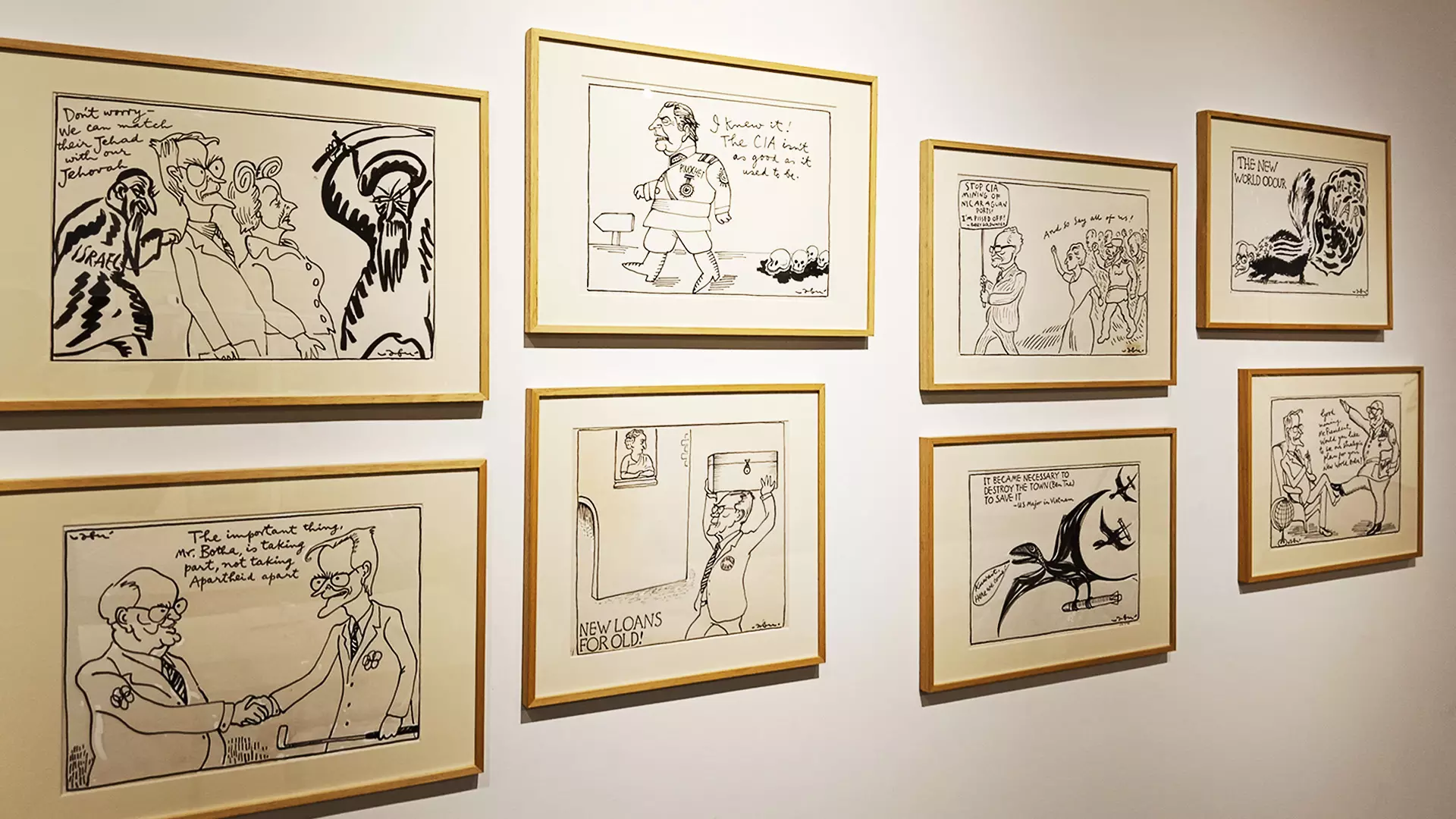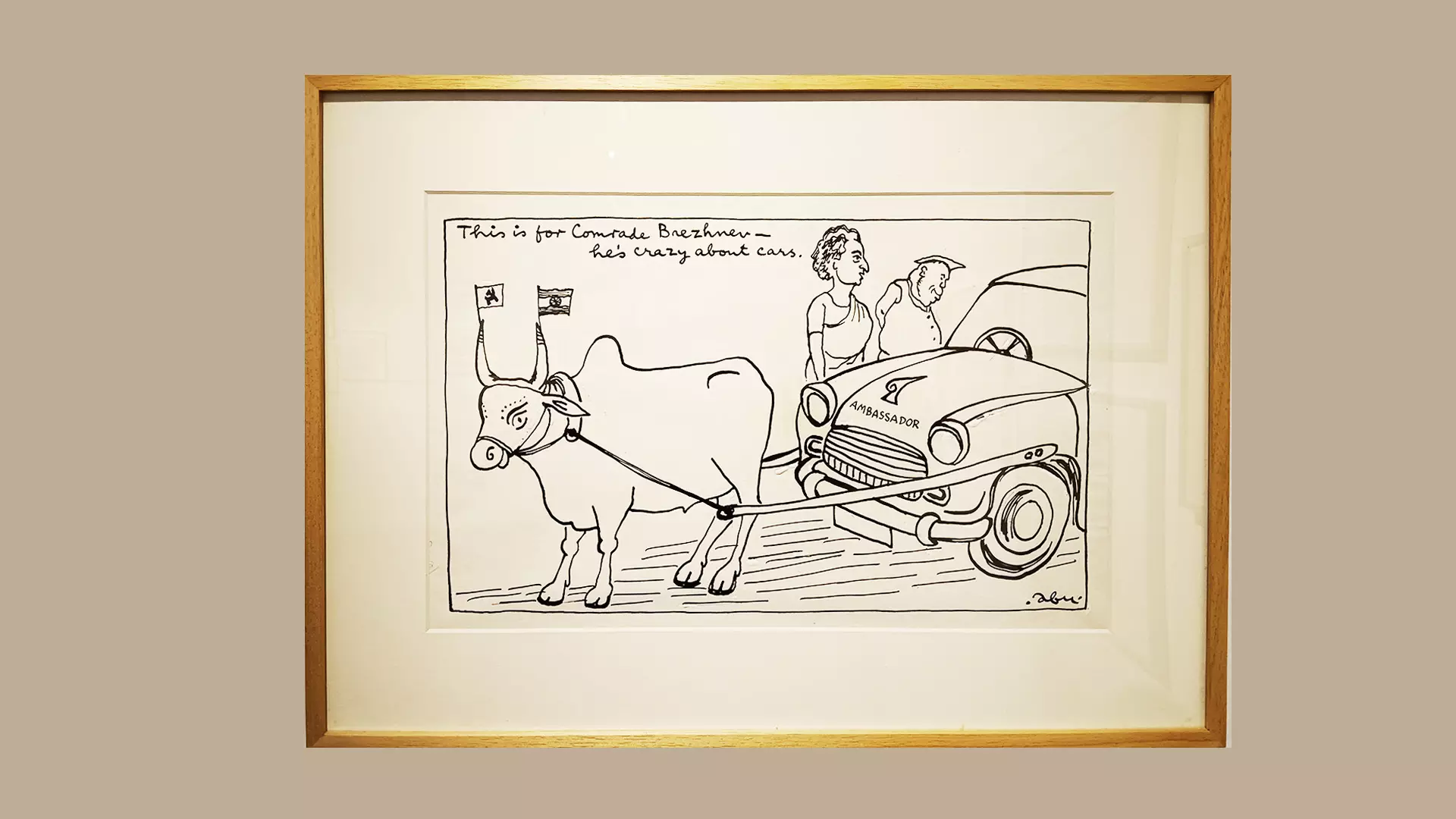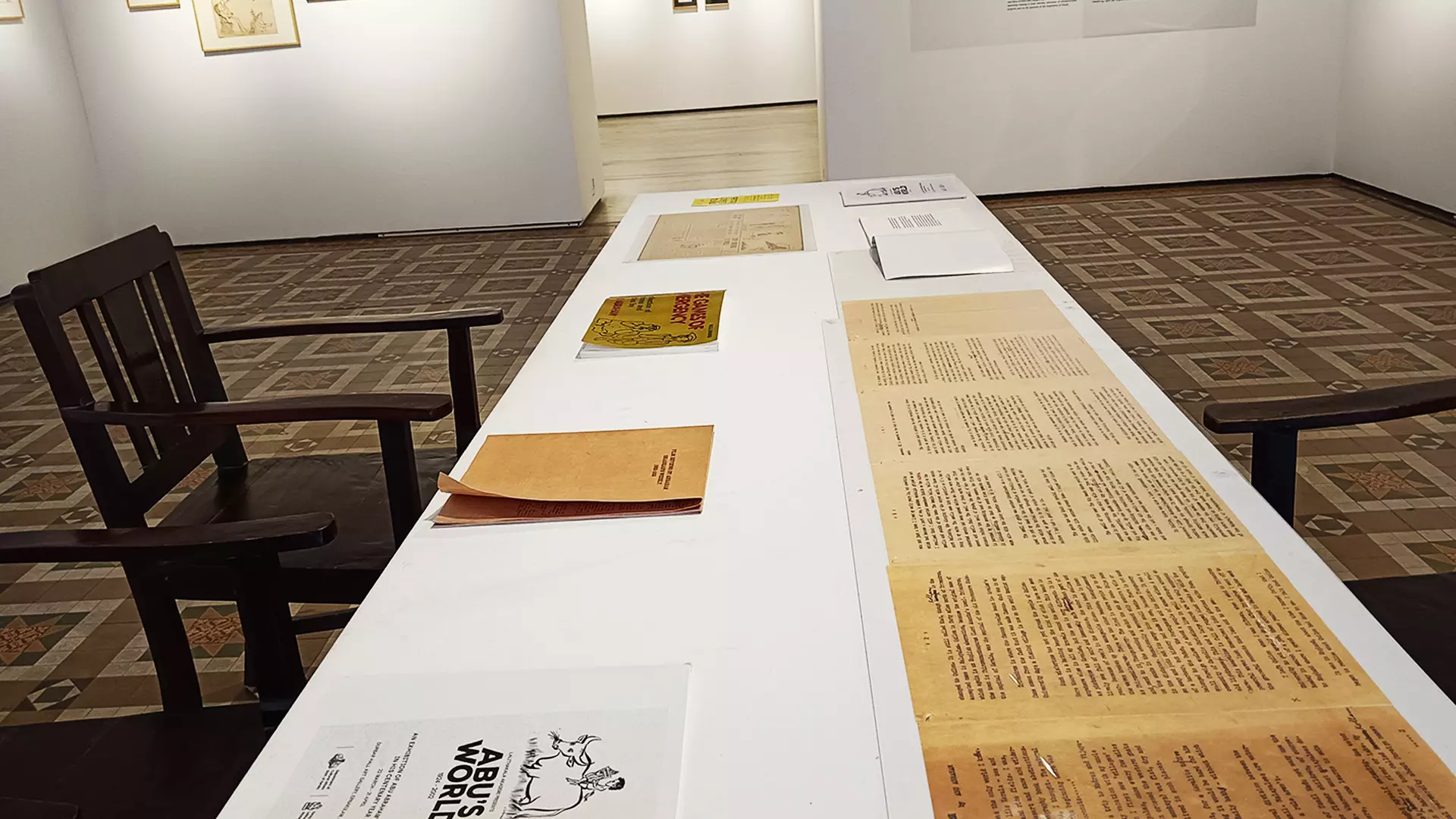
- Home
- India
- World
- Premium
- THE FEDERAL SPECIAL
- Analysis
- States
- Perspective
- Videos
- Sports
- Education
- Entertainment
- Elections
- Features
- Health
- Business
- Series
- In memoriam: Sheikh Mujibur Rahman
- Bishnoi's Men
- NEET TANGLE
- Economy Series
- Earth Day
- Kashmir’s Frozen Turbulence
- India@75
- The legend of Ramjanmabhoomi
- Liberalisation@30
- How to tame a dragon
- Celebrating biodiversity
- Farm Matters
- 50 days of solitude
- Bringing Migrants Home
- Budget 2020
- Jharkhand Votes
- The Federal Investigates
- The Federal Impact
- Vanishing Sand
- Gandhi @ 150
- Andhra Today
- Field report
- Operation Gulmarg
- Pandemic @1 Mn in India
- The Federal Year-End
- The Zero Year
- Science
- Brand studio
- Newsletter
- Elections 2024
- Events
Abu’s World: Amid Lok Sabha polls 2024, a sneak peek into India’s troubled (political) past

When campaigns to the upcoming Lok Sabha elections gain momentum in Ernakulam, a one-month-long exhibition of the cartoons of renowned cartoonist-caricaturist Abu Abraham (1924-2002), drawn during the most troubled times in the political history of India, at Durbar Hall Art Gallery makes sense. Why? Let us get the answer from Abu Abraham himself, who said in an interview in the late...
When campaigns to the upcoming Lok Sabha elections gain momentum in Ernakulam, a one-month-long exhibition of the cartoons of renowned cartoonist-caricaturist Abu Abraham (1924-2002), drawn during the most troubled times in the political history of India, at Durbar Hall Art Gallery makes sense. Why? Let us get the answer from Abu Abraham himself, who said in an interview in the late 1970s: “Lately, I have come to the conclusion that there is nothing non-political in the world. Politics is simply anything that is controversial and everything in the world is controversial.” There is a sense of politics in every aspect of life. One can never stay away from politics, particularly in a democratic set-up, as one is directly or indirectly involved in it.
Cartoons and caricatures played a major role in the social, political and cultural history of India, particularly after Indira Gandhi declared a national Emergency in 1975. Many national newspapers and magazines had regular cartoons and caricatures which questioned the government’s wrong policies and corruption in the public sector. If you want to know the role played by the cartoons and caricatures, then you should walk into Durbar Hall where a collection of cartoons, caricatures and drawings of Abu Abraham has been exhibited as part of his centenary year. Organised by the Lalithakala Akademi in association with the Department of Cultural Affairs of the Government of Kerala, ‘Abu’s World’ opens a window to the political history of India during the 1960-90s.

The exhibition Abu's World is on till April 21.
More than 350 original cartoons have been displayed and each one is significant in its own way. “Abu’s vision was vast and wide. He would pick up various state leaders, say 30 or 40, from his memory and do caricatures of them. This happened because he was conscious about the federal system of politics in the country,” says EP Unny, chief political cartoonist of The Indian Express. Abu, according to Unny, kept his caricature fluid enough to match the political flux.
“He (Abu) didn't stick to stock caricaturing which was hard enough given the endless range of India's political faces. He improvised. Not that he visibly altered the face and form every time he sat down to draw. The news mood somehow rubbed off. And on that special day, the big newsmaker transmogrified into bird, animal, fruit or flower. The cosmetic surgery was performed most gently, the flowing line made it all look so inoffensive and telling,” he says. The forever exceptional Gandhiji apart, Che Guevara is one figure all young and older visitors would recognise in this exhibition. “Sketched in Havana in 1962, long before he morphed into a T-shirt icon, Che is here in the original, about to break into a smile. It takes a masterful editorial artist to get that moment,” he adds.

Cartoons and caricatures played a major role in the social, political and cultural history of India, particularly after Indira Gandhi declared a national Emergency in 1975.
“As a cartoonist and caricaturist, I am interested not only in the family of the human but in all the earth’s creatures,” reads a quote from Abu Abraham on a white paper pasted among hundreds of his cartoons, caricatures and sketches displayed at Durbar Hall. “What is interesting, as one begins to contemplate the human face, is how closely it resembles others in the animal kingdom. After some 30 years of cartooning and caricaturing, I have developed a tendency to see people as animals, birds, fish or insects,” it says. It was this fascination for new modes of expressions that made Abu Abraham one of the best political cartoonists in the country. “I have seen many pigs, rats and fish in my cartooning life, but I have only seen one true elephant and that was Charles de Gaulle. When he was young, cartoonists in France used to draw him like a matchstick–he was so lean and erect–but when I saw him in 1963 in Paris, he immediately struck me as an elephant. As he ambled to his press conference platform, he had the elephant’s leisurely grace and dignity. His nose was certainly elephantine. And as he talked he wanted his hands rhythmically as an elephant flaps its ears,” wrote Abu Abraham in an article published in 1980.
Born in Mavelikara (Kerala) in 1924, Abu graduated from the University College, Thiruvananthapuram in 1945. After graduation, he went to Bombay (Mumbai) in search of a job, then arrived in Delhi and in 1953, he went to England in 1953 where he spent 16 years. In a career spanning 40 years, Abu worked for various national and international newspapers including The Bombay Chronicle, Shankar’s Weekly, Blitz, Tribune, The Observer, The Guardian and The Indian Express. From 1972-1978, he was nominated a member of the Rajya Sabha, the upper house of Parliament. From 1981, he worked as a freelancer, syndicating his works to several newspapers and commencing a new strip cartoon, ‘Salt and Pepper’.
Former Prime Minister Indira Gandhi’s presence in Abu’s cartoons has been a topic for discussions among various cartoon enthusiasts in India. The ongoing exhibition has included many cartoons of Abu in which Indira Gandhi was the central figure. Janaki Nair, who compiled an information guide brought out as part of the exhibition, writes: “Abu Abraham returned to India after a decade with The Observer (1956-66) and three years with The Guardian (1966-69), when Indira Gandhi had been made Prime Minister following the death of Lal Bahadur Shastri in 1966. She was no doubt one of the most important–and eminently lampoonable – politicians of the time. It is not surprising that she formed the core of many of Abu’s daily cartoons, as their careers ran side by side.” Abu’s work on Indira Gandhi encompassed many critical events and processes in the life of independent India; she was the most expected, and yet the most decisive Prime Minister of the 20th century.

More than 350 original cartoons have been displayed at the exhibition and each one is significant in its own way.
Abu’s famous ‘Snakes and Ladders’ cartoon shows Indira Gandhi’s tryst with socialism was akin to a game of snakes and ladders while another one, titled “Round Two”, shows she is poised for a win against a seriously wounded Nijalingappa inside a boxing ring. India’s first nuclear test was conducted in Pokhran in Rajasthan in 1974. Even though it was referred to as a ‘peaceful nuclear explosion’ by Indira Gandhi, Abu questioned the ‘genuinity’ of the project through his cartoons. “Abu’s cartoons allow us to trace the biography of the nation itself – within and outside of its borders – through the biography of this singular person,” says Janaki Nair, who is a writer and historian.
The organisers of ‘Abu’s World’ have made all the necessary arrangements for visitors by providing captions, information charts and descriptions about the cartoonist and his works displayed at the venue. However, if you don’t follow the events that had taken place in the 1970s or 80s, you will not be able to understand the importance of those cartoons.

Former Prime Minister Indira Gandhi’s presence in Abu’s cartoons has been a topic for discussions among various cartoon enthusiasts in India.
“It is better to do some research before coming to see these cartoons. Otherwise, you will miss the significance of many cartoons displayed here. This is the first time I am seeing an exclusive exhibition of cartoons and caricatures in Ernakulam. Exhibitions like this will create awareness among people about India’s political and social history,” says K Ramachandran, a visitor. The cartoons displayed here are relevant as we see the same (political) stunts today as well, according to Vijay Kumar, a teacher in Alappuzha. “I wish more people, particularly youngsters, could visit the gallery. The cartoons and caricatures will definitely give them a clear idea about the political history of India in the 1970s and 80s,” he says. “Abu’s World” will be on till April 21.
